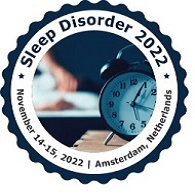
Biography
Biography: William Moscoso
Abstract
The present work focuses on the development of two biomedical devices for patients with Obstructive Sleep Apnea Syndrome (OSAS). The first device is a minimalist polysomnograph that allows the detection of apneas and hypopneas, and the second is a rehabilitation device through electrostimulation (ES) in the submental and intraoral areas.This research arises from the need for more affordable technologies for the measurement of sleep disorders and for the alternative treatment of OSAS, such as EE, which has shown efficacy in recent studies by reducing the Apnea Hypopnea Index (AHI) in patients. The development of the first device, a minimalist polysomnograph based on the measurement and analysis of electroencephalography, electromyography, respiratory effort, oxygen saturation and nasal temperature signals, consisted of four stages: (i) analysis of sleep tests with which two algorithms: detection of awake/asleep sleep states and detection of apneas and hypopneas, which were implemented in Matlab software, (ii) analysis of requirements and sensors necessary for the implementation of the biomedical device (iii) design and implementation of the polysomnograph divided into hardware design with all the electronic instrumentation and software design with the processing system implemented in an electronic card and the programming of a touch screen; and (iv) some preliminary technical tests of the biomedical device. The development of the second device is an electrostimulator with four channels associated with four stimulation points (one point in the submental region and 3 intraoral). The design process has four stages: (i) an analysis of the literature establishing the variables and thresholds necessary for the design, (ii) tests with two commercial electrotherapy equipment, reviewing thresholds and sensations in volunteers, (iii) the development of the biomedical device than with a hardware and software design, the latter with programming of a microcontroller and design of a mobile application and (iv) the technical validations carried out on the equipment, reviewing repeatability and stability of the variables: current intensity, frequency and variable load.

